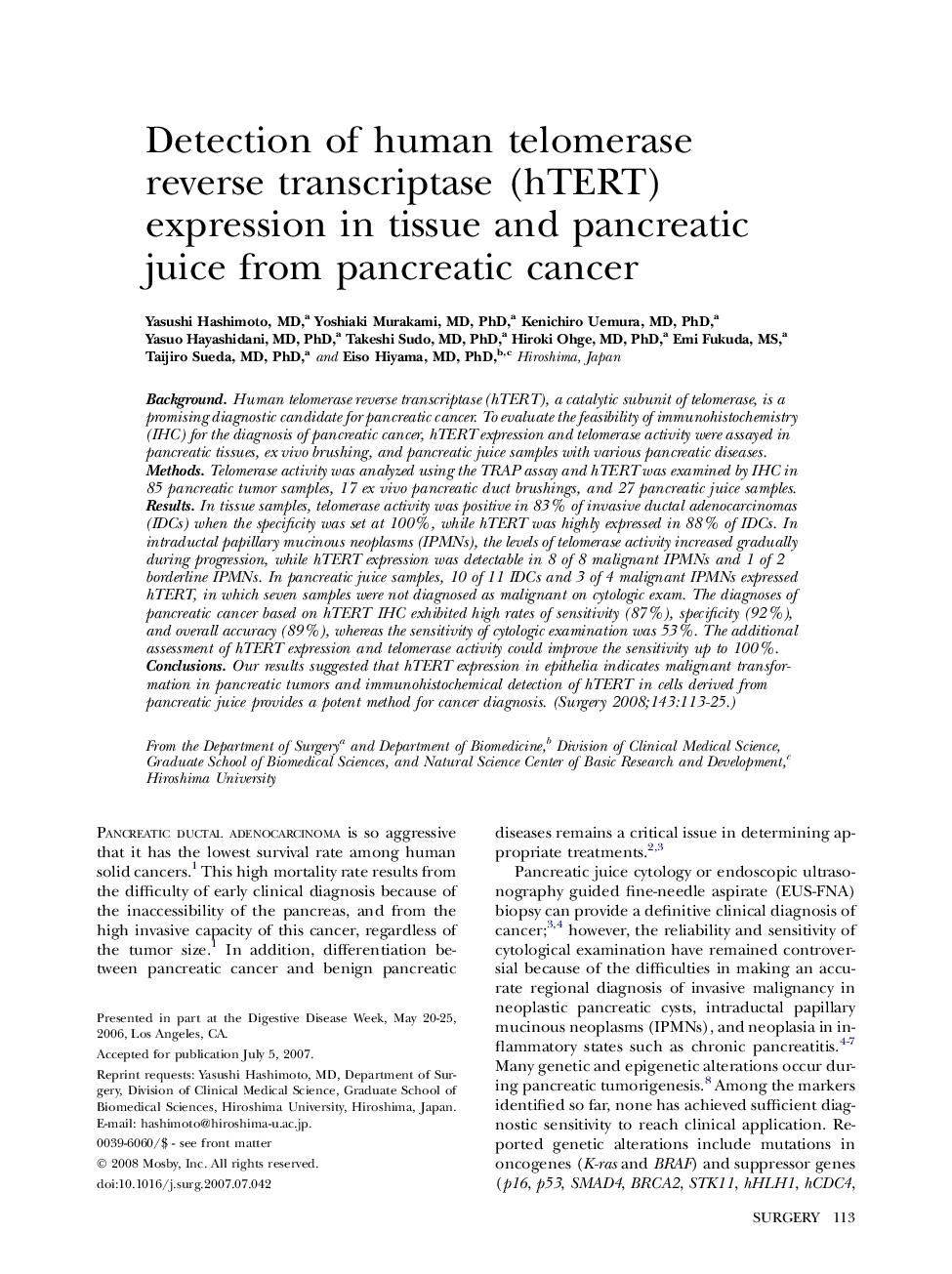| Article ID | Journal | Published Year | Pages | File Type |
|---|---|---|---|---|
| 4308437 | Surgery | 2008 | 13 Pages |
BackgroundHuman telomerase reverse transcriptase (hTERT), a catalytic subunit of telomerase, is a promising diagnostic candidate for pancreatic cancer. To evaluate the feasibility of immunohistochemistry (IHC) for the diagnosis of pancreatic cancer, hTERT expression and telomerase activity were assayed in pancreatic tissues, ex vivo brushing, and pancreatic juice samples with various pancreatic diseases.MethodsTelomerase activity was analyzed using the TRAP assay and hTERT was examined by IHC in 85 pancreatic tumor samples, 17 ex vivo pancreatic duct brushings, and 27 pancreatic juice samples.ResultsIn tissue samples, telomerase activity was positive in 83% of invasive ductal adenocarcinomas (IDCs) when the specificity was set at 100%, while hTERT was highly expressed in 88% of IDCs. In intraductal papillary mucinous neoplasms (IPMNs), the levels of telomerase activity increased gradually during progression, while hTERT expression was detectable in 8 of 8 malignant IPMNs and 1 of 2 borderline IPMNs. In pancreatic juice samples, 10 of 11 IDCs and 3 of 4 malignant IPMNs expressed hTERT, in which seven samples were not diagnosed as malignant on cytologic exam. The diagnoses of pancreatic cancer based on hTERT IHC exhibited high rates of sensitivity (87%), specificity (92%), and overall accuracy (89%), whereas the sensitivity of cytologic examination was 53%. The additional assessment of hTERT expression and telomerase activity could improve the sensitivity up to 100%.ConclusionsOur results suggested that hTERT expression in epithelia indicates malignant transformation in pancreatic tumors and immunohistochemical detection of hTERT in cells derived from pancreatic juice provides a potent method for cancer diagnosis.
